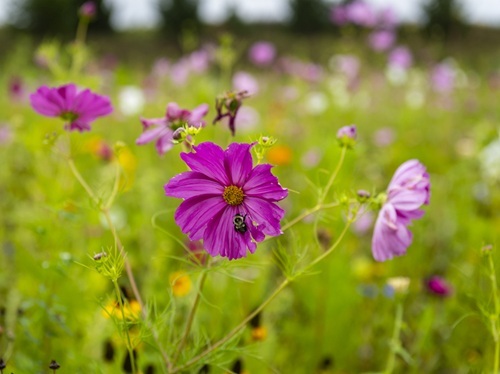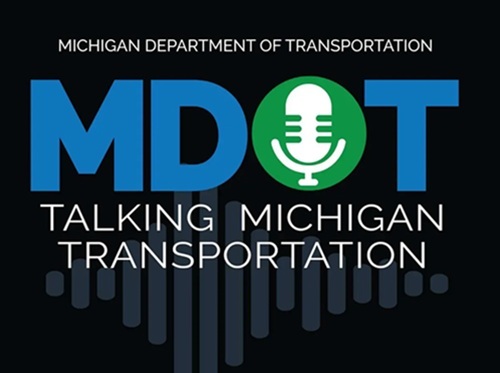The Michigan Department of Transportation is leveraging a grant to transform unused land near an interstate rest area into a 14-acre scenic strip of tallgrass prairie designed to attract pollinators.
[Above photo by Michigan DOT]
The agency-owned parcel is south of the Turkeyville rest area on southbound I-69, just west of the right of way, according to Michigan DOT Ecological Resources Specialist Kelsey Alvarado. The goal of the project is to create habitat for pollinators “to serve as a safe refuge and connector to other suitable habitat in the landscape,” she said.

The 14 acres wasn’t serving any particular purpose, so the department decided to “allow it to function as a scenic strip once again and support pollinators at the same time,” Alvarado noted.
And, because the land is beyond the right of way, it is “an ideal location for a restoration project since it is not subject to the same roadside vegetation management standards as rights of way,” she added.
The $5,100 grant from the University of Illinois Chicago and Stantec will pay for a custom seed mix of grasses and flowering plants to attract bees, hummingbirds, and other pollinators, according to a Michigan DOT news release. The seed mix also will include native milkweed seeds that will be used to attract Monarch butterflies.
MDOT crews already have mowed and treated the scenic strip with a summer herbicide application. After applying a herbicide in the fall of 2024 and completing further treatment this spring, crews will sow seeds.
Alvarado said the wildflowers and other plants typically take up to three years to fully bloom. The scenic strip project “fits into Michigan DOT’s larger pollinator habitat management plan and conservation initiatives that aim to reduce negative impacts, improve existing habitat and create new habitat,” she noted.
This isn’t the first time Michigan DOT’s Pollinator Habitat Management program has utilized real estate near interstates for pollinators. Tall sunflowers flourish along I-75 near US 10 just west of Bay City, while wildflowers attract bees and hummingbirds at the Port Huron Welcome Center at westbound I-94.
Other state departments of transportation have developed programs to create habitat for and to protect pollinators, which play a critical role in the world’s food production.
For example, the Tennessee Department of Transportation mails milkweed seeds to state residents who request them to encourage Monarch butterfly activity; the Virginia Department of Transportation committed in 2024 to installing 135 acres of new pollinator habitats throughout the commonwealth; and the Texas Department of Transportation is studying the effectiveness of experimental butterfly diverters to save the nearly endangered Monarch butterflies from becoming roadkill.




